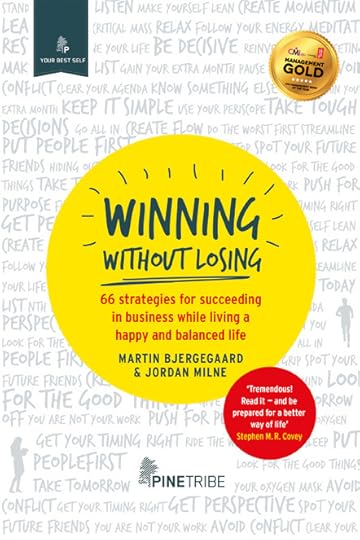Martin Bjergegaard's Blog, page 25
September 24, 2014
3 Ways to be a Business Pacifist
“Get out of my face!”
That was the first thing I heard through my open window this past Monday morning, and I was instantly confused. Naturally, I stuck my head outside to see what the commotion was all about. I caught the show as it was escalating, with two men yelling and giving each other the preemptive shoves that usually lead to something else. Looking around, I saw the heads of other bystanders popping out of random windows—all of them sharing the same confused expression I myself must have been exuding. The conflict subsided, and the men thankfully parted before anyone took the first swing. It was at this point I told myself, “What am I doing? Now I’m going to be late for work!”
As I was getting ready, I had the epiphany in the shower (like many of us do) of just how disruptive violence and aggression can be. Sure, the parties involved had their respective reasons for their actions. Yet, a simple conflict between two had now influenced the collective third party of head popping bystanders who were (most likely) spending time thinking about the issue rather than focusing on their own tasks at hand.
In the entrepreneurial scene, it’s very common to meet very passionate people. There are people who become so engrossed in their work, that if anyone tries to mess with their projects, (which is quite common in business), chances are that emotions can run high. When this happens, the aggression transcends the fighting parties, and impacts the collective. In order to preserve the workplace, it’s important that during these times we remain, as Martin Bjergegaard has aptly named it, a Business Pacifist.

For more about Work-Life Balance, follow Martin on Facebook and Twitter
Some individuals (I’m assuming the two men I mentioned earlier are prime examples) have a very low threshold, and are likely to snap just by giving them the wrong look. It’s the same in business—except if you snap here, it can cost dearly! Maintaining the perspective of the Business Pacifist will help you foster a peace within your self, your organisation, and gain more success and happiness.
Are you curious to learn how to become a Business Pacifist? Here are 3 ways to help you on your way to a peaceful and successful business practice:
Realise your potential Loses
Everybody has a different breaking point. Depending on the level of the attack, at some point we all feel a need to protect ourselves. The important thing to realise here is that you always have a choice. When you explicitly decide to act head on, either offensively or defensively, you are running a risk of incredible losses. Lawyer fees, wasted time, shifts in work culture, etc.—all of these can cost your company dearly. Before you act, always take an objective step back and see if it truly is worth the potential loss.
Allocate your resources
Legal action can be a tempting option. Martin explains a scenario in his book Winning Without Losing where a former business partner began to recruit people from Martin’s staff, mimicked intellectual property, so that his new company could compete directly against Martin and his team.
Beyond the personal disappointment of having a friend turn on him, Martin and his team knew that they could easily win a lawsuit, as the former partner was overtly breaking the rules of his contract. Yet, instead of letting negative energy fester during an extended legal situation, they decided to forgive the man and allocate their would-be legal costs on something more productive: their own company. Bettering their own company made them stronger, as well as boosted team morale. They eventually made a multimillion exit with their company, while their competitor never really got his venture off the ground.
Always try to solve conflict in person
In a previous blog, I’ve discussed the importance of refraining from impulsively sending angry emails. The fallout and complications that can result from a misinterpreted email can cost a company time and energy, as well as be detrimental to the work culture. When the option is available, always reach out in person. Attempt to objectively understand both the subjective points of view, and work through the issue.
Like Pine Tribe on Facebook for more tips on Nordic Leadership
Like box
I understand why people may not be 100% supportive of the Pacifist mentality. For many, it is very important to stand up for yourself and what you believe in. In a business setting however, it can be argued that conflicts and arguments are a waste energy and time. Sometimes it’s just better to focus on building a positive work culture. Build a team with a morale that wants to work on creating the best at what they do, compared to being better than competitors. Let them focus on the task at hand, rather than get them riled up and distracted. The success you feel from cultivating the best team and company, and product, will always feel better than always fighting to beat out competition.
The post 3 Ways to be a Business Pacifist appeared first on Pine Tribe.
September 19, 2014
Entrepreneurship: Know when to pull the plug
Last week, I was fortunate enough to attend a conference in Copenhagen for entrepreneurship called Iværk og Vækst. While there, I stopped through to see a panel discussion called From Big Business to Bankruptcy where our own author, Martin Bjergegaard, was one of the four speakers. The panel was made up of serial entrepreneurs who have all kickstarted multiple successful companies. Even with all of their success, they were all very open about discussing one thing that many people fear: Failure.
Failure is natural, especially when you work on so many projects. The only thing to fear is mishandling failure. Of course, this is easier said than done. An interesting moment during the aforementioned panel was when Brian Sandholm, co-founder of Sekoia, spoke about the time he experienced failure. To paraphrase, the host asked him, As your company was going under, did you feel as if you were one of the violinists on the Titanic, going down with the ship? To this Brian profoundly answered, No, by this time I had become the ship.
It’s these scenarios, when we become so devoted to a project, that it becomes the most difficult to admit defeat. This goes beyond entrepreneurship. Everyone experiences the love for an idea or concept, and we will for it to work. We persevere through the tough times so much so that we can become consumed by the project—and if things begin to go south, we as individuals go down with it.
As tough as it may be, there are times when we have to take a step back and know when to quit, in order to preserve ourselves and move on to greater things.
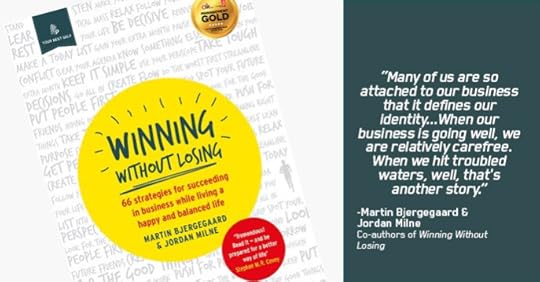
To learn more about Winning Without Losing, follow the book on Facebook and Twitter
In Martin’s book Winning Without Losing, Martin and his co-author Jordan Milne discuss the concept of “Know when to pull the plug”. Below are a couple of suggestions to let you know when it might be time to consider cutting your losses, and pulling the plug:
Zig Zagging
With some new businesses, you may find that you are drastically changing your business concept to suit the market. Although adapting to the situation is a positive act, if your business needs to change its concept repeatedly, limitations arise. It’s this Zig Zagging through the market, the constant change of course, can be a sign that this particular project doesn’t have what it takes.
Misplaced Passion
It’s very common for entrepreneurs to feel inspired to start other businesses while working on a project that isn’t really taking hold. If you begin to spend most of your time dwelling on the other project, then you may have lost the passion for the current endeavor. When this passion is completely gone, a project has the chance of failing.
Subjectivity vs. Objectivity
This is what Brian Sandholm warned us about—don’t become the ship. When we are close to a project, we tend to overlook its flaws. In the end, pulling the plug should be an objective decision. Every once in awhile, remember to take a step back. See how the market is reacting to your project, and how it’s functioning in the long term. If things are looking bleak, it may be time to think about cutting your losses.
It’s very common for entrepreneurs to become completely absorbed by their projects and ideas. However, it’s important to remember that, in the end, we are all just people and work is only work. That’s the overarching message that Martin Bjergegaard shares with us through his book Winning Without Losing. We as people should never have to sacrifice ourselves and the things we care about in order to strive towards success. Realising this will not only help us achieve work-life balance, but also reduce our fears of failure.
Like Pine Tribe on Facebook for more tips on life and culture in Scandinavia
Like box
The post Entrepreneurship: Know when to pull the plug appeared first on Pine Tribe.
September 10, 2014
Don’t Send That Angry Email: Avoiding Office Conflict
“Don’t Make Decisions When You’re Angry. Don’t Make Promises When You’re Happy.”
I have tried my best to live by this anonymous quote—but everybody makes mistakes sometimes. Last week I had an unfortunate experience of trying to move large pieces of furniture through narrow spaces. After pivoting, wedging, and shoving for what felt like hours, I was reaching a boiling point. I hated the hallway, I hated that I couldn’t out-think the situation, and most of all—I wanted to punch IKEA and their “simple” furniture solutions in the face.
It was at that point that my sister called me. She didn’t catch me at my finest and when she delivered some slightly bad news, the dam ruptured. I was unnecessarily snappy over something that really wasn’t a big deal in the slightest. This was the time I should’ve chanted the mantra above.
“Sending a message is instantaneous, and personal anger has no time to settle and be reflected upon” -Martin Bjergegaard
We’ve all had those moments, and the worst is when they happen at work. Something gets you really worked up, and then (thanks to modern technology) it is so easy to just write an angry email and shoot it to someone. Except instead of solving problems, minor errors become large office conflicts.
Martin Bjergegaard, a thought leader in Scandinavian work-life balance, strongly advises everyone: “Don’t send that angry e-mail”. Back before the internet, if you wanted to retaliate against anything, you had to sit down and write a letter. As you vent your anger, you get most of it out of your system and by the time you’ve finished, you’re most likely reconsidering sending the letter in the first place. It’s not like that with email. Sending a message is instantaneous, and personal anger has no time to settle and be reflected upon. As Martin says, “one click, and without a chance to change one’s mind, the mail hits the recipient in the face like a clenched fist.”

For more about Work-Life Balance, follow Martin on Facebook and Twitter
However, there are times that mistakes happen and they need to be dealt with. This however doesn’t justify instantaneous combustion via emails. Martin’s book Winning Without Losing is made up of strategies he learned through interviewing successful entrepreneurs who practice work-life balance, and one of his sources had a great method for dealing with scenarios just like this:
1. Write the Email and Think:
Think carefully about what you believe to be fair and unfair – try to put yourself in the recipient’s place. Might his or her experience of the facts be different from yours?
2. Don’t send just yet:
When you’ve written the email, do not send it. Instead, do the following:
Think about whether it’s possible to meet with the recipient face to face instead and talk about it. If so, then do it.
If a face-to-face meeting is not possible, then read through your email again and remove any text which has no forward-looking purpose, but is only meant to provoke or to make yourself feel better.
Get someone else to read the email and comment on it honestly – and get that person to put himself in the recipient’s shoes.
3. When they respond
If, despite your attempts at toning down your communication, you get an angry email in return, then refrain from participating in escalating the office conflict. Now is the time to calm things down again, and that’s your responsibility. Get the person on the phone or meet them face to face.
This method is very useful in the office, and its principles can be applied to everyday life. If I had just taken some time to evaluate the situation, I could’ve avoided having to take time to rightfully apologise for my unnecessary outbursts. I could’ve spent that precious time finding a silver lining to my new life problem: What are the benefits of having a lopsided closet permanently wedged in my hallway?
The post Don’t Send That Angry Email: Avoiding Office Conflict appeared first on Pine Tribe.
September 3, 2014
Working with your Flow: How your energy leads to Work-Life Balance
We’ve all had that moment at work when you find yourself staring at a computer screen and completely drawing a blank. The times where your brain is just completely disconnected from the task at hand, and nothing seems to flow. It’s always a strange experience—particularly when you compare it to other days where the work is just pouring from you. Those are the awesome days where you just fly through the job at hand and have to bite your tongue to stop yourself from exclaiming; “I’m on fire today!”
The stark contrast between these experiences is a testimony to the concept of flow. Flow is simply the process of taking advantage of your own energy levels. As you probably have learned by now, everyone is different. Some people smile as they fill out paperwork at the break of dawn—others can’t even remember their own name until 10am. But due to the general structure of the workday, there are certain periods during the day when many of us feel that we need to force ourselves to work, just because our mental and physical functions don’t oblige the 9-5 lifestyle. Allowing yourself to work in line with your own flow will make you more efficient, energetic, and creative.
“When you listen to your flow, a task that could normally take hours may only take you 20 minutes.”
Jordan Milne, co-author of Winning Without Losing, explains the flow concept perfectly by comparing it to surfing. Those times when you feel the wave coming. You align yourself with the direction of your wave, and with the surging power you ride to shore with ease. On the other hand, there are times when you are just treading water, desperately trying to go in the opposite direction of the energy. This is why Milne and his co-author Martin Bjergegaard stress the importance of flow in the hunt for work-life balance. It is important to pay attention to what your own body lets you do at a given time. If you feel that you are better suited to go for a run at 2:30 in the afternoon, rather than stare at spreadsheets, then put on your running shoes. If you feel like after dinner you are psyched to answer your emails, allow yourself to do so. When you listen to your flow, a task that could normally take hours may only take you 20 minutes.

To hear more from Jordan, follow him on Facebook and Twitter.
Listening to your own energy flow is just one of the many strategies Jordan and Martin suggest in their book. Winning Without Losing is compiled of work-life balance advice given from dozens of successful entrepreneurs from all over the globe who have built their businesses on the basis of work-life balance. For this particular strategy, don’t wait until the day after tomorrow—listen to your energy and work on your own time. Give in to your flow, and you will become more balanced because of it.
Like Pine Tribe on Facebook for more insights on work-life balance in Scandinavia
The post Working with your Flow: How your energy leads to Work-Life Balance appeared first on Pine Tribe.
August 27, 2014
Pine Tribe Author Interviews: Martin Bjergegaard [Video]
In this edition of Pine Tribe Author Interviews, I sit down with Work-Life balance thought leader, Martin Bjergegaard.
Martin is the co-author of the book Winning Without Losing, which won the CMI award for Management Book of the Year. The book outlines 66 strategies on how to live a balanced lifestyle while running a successful business. Through interviewing successful entrepreneurs (referred to as Role Models), Martin aims to spread the messages of Work-Life Balance to anyone who may feel that they’re sacrificing their personal lives in order to achieve successful careers.
Check out the video below to learn more about Martin, and how he discovered the power of Work-Life Balance
Martin started his career as a consultant for a global management consultancy firm. While stationed in Kuwait City, the stress of striving within the company restricted him from seeing his family and loved ones, and it became detrimental to his own health. He decided to leave the company to pursue his own interests in the startup world.
Since then, Martin has been referred to as a Serial Entrepreneur. As a founding partner of Rainmaking, a company that helps other startups grow, he has played a role in launching 15 companies so far—all of which have working cultures which encourage Work-Life balance.
The post Pine Tribe Author Interviews: Martin Bjergegaard [Video] appeared first on Pine Tribe.
July 22, 2014
How Entrepreneurial are you? [Quiz]
We often hear about those small startups out there that become hugely successful, being valued at numbers that we can’t even comprehend. That’s when some of us have that thought: “I could do that.”
But how entrepreneurial are you really? Do you have the right entrepreneurial mindset? Could you potentially kick-start a company at any given moment? How well do you work with others? These are all questions to consider before classifying yourself as an Entrepreneur.
Martin Bjergegaard, serial entrepreneur and co-author of the best selling management book “Winning Without Losing” has created a quiz that will help you determine whether or not you actually are an entrepreneur at heart.
Click the link below and find out if you only envy the successful startups out there, or if you truly have the Entrepreneurial Spirit!
Take the Test>
Images from: here, here, here, here, here and here
The post How Entrepreneurial are you? [Quiz] appeared first on Pine Tribe.
How Entrepreneurial are you?
We often hear about those small startups out there that become hugely successful, being valued at numbers that we can’t even comprehend. That’s when some of us have that thought: “I could do that.”
But how entrepreneurial are you really? Do you have the right entrepreneurial mindset? Could you potentially kick-start a company at any given moment? How well do you work with others? These are all questions to consider before classifying yourself as an Entrepreneur.
Martin Bjergegaard, serial entrepreneur and co-author of the best selling management book “Winning Without Losing” has created a quiz that will help you determine whether or not you actually are an entrepreneur at heart.
Click the link below and find out if you only envy the successful startups out there, or if you truly have the Entrepreneurial Spirit!
Take the Test>
Images from: here, here, here, here, here and here
The post How Entrepreneurial are you? appeared first on Pine Tribe.
July 1, 2014
Martin Bjergegaard’s Top 10 Books for Entrepreneurs
In the spirit of Pine Tribe’s summer reading list, we decided to reach out to our authors and ask them the question, “What are you favorite books?” Since our authors have written on a variety of topics, from happiness at work, to how to achieve a youth naturally, you can bet they all have a different taste in books.
Today’s Top 10 Book List comes from our resident author Martin Bjergegaard. Martin, a self-proclaimed serial entrepreneur, takes great pride in his achievement of work-life balance. His CMI award-winning book, Winning Without Losing, focuses exactly on that: how to obtain work-life balance in an entrepreneurial setting. Together with his co-author Jordan Milne, Martin set out to pick the minds of entrepreneurs who achieved success without any personal sacrifice. What resulted was 66 strategies and methods that can help anyone achieve work-life balance.
As you may have assumed by now, Martin’s Top 10 List is compiled of books that align with his own—inspirational stories that speak to those who are entrepreneurial at heart. As you can also see from his list’s formatting, Martin lives by his own advice—writing in a lean and concise manner that quickly gets your point across, without the excess.
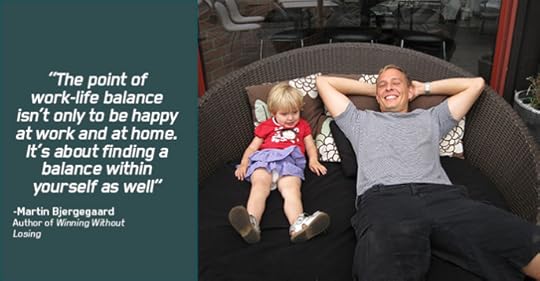
If you want to learn more about work-life balance, follow Martin on Facebook and Twitter
Without further ado, (in no particular order):
Martin Bjergegaard’s Top 10 Books for Entrepreneurs
1. The Power of Full Engagement , Tony Schwartz
, Tony Schwartz
Tells us how to remain sane and healthy in a busy work environment and society
It’s all about optimising energy, instead of time
We can only be productive for 90 minutes in one go, then we need a revitalising break
It’s about optimising the time we are in our flow, because in flow we are exponentially more effective
2. The Power of Now , Eckhart Tolle
, Eckhart Tolle
We are not our thoughts, we are still there, even if we are not thinking
Life is nicer and easier if we don’t think all the time…
Nothing bad will happen when we tap more into the Now, in fact we will be making better decisions based on our true presence, empathy, and connection
3. The 7 Habits of Highly Effective People , Stephen R. Covey
, Stephen R. Covey
The first book about personal growth I ever read, this had a tremendous impact on me
It’s about taking responsibility for your own life, knowing that every action has a consequence, and establishing good and productive habits
Success in life is much more about character than about tactics
4. Outliers: The Story of Success , Malcom Gladwell
, Malcom Gladwell
An extremely entertaining way of writing a non fiction book!
A true page turner, with awesome and surprising stories
The point is that there is always a logical explanation when someone has become exceptionally successful at something
The 10,000 hour rule
5. Do More Faster , David Cohen & Brad Feld
, David Cohen & Brad Feld
A great book about entrepreneurship
Broad spectrum of advice from people who are doing it themselves
“That is part of the beauty of all literature. You discover that your longings are universal longings, that you’re not lonely and isolated from anyone. You belong.”-F. Scott Fitzgerald
6. The Optimist , Laurence Shorter
, Laurence Shorter
A funny and insightful journey into what optimism, and life, is really about
Laurence Shorter is an ex-Mckinsey consultant and an ex-comedian. This makes for a playfully insightful combination
7. The Art of Happiness , Dalai Lama
, Dalai Lama
The most inspiring book about personal happiness that I have ever read
Very insightful, based on the learnings of Dalai Lama who, in my opinion, is one of the most amazing people alive
8. The 8th Habit , Stephen R. Covey
, Stephen R. Covey
About how to become a great leader
The most profound book that I have ever read about what leadership truly is
9. The No Asshole Rule , Robert I. Sutton
, Robert I. Sutton
Tells us why we shouldn’t accept rude and unfriendly people in the workplace
They kill the good vibes, makes people less productive, and are just a waste of time – get them out of the organisation!
I couldn’t agree more, and we have always gone out of our way to only have nice and trustworthy people in our companies
10. Failing Forward , John C. Maxwell
, John C. Maxwell
Failing is a natural part of life, in fact there can be no success without failure
All humans beings experience the feeling of failure, even if they are immensely successful
How do we think about failure, and how do we deal with it? This book gives a good suggestion
That’s it for Martin’s Top 10 List. If you’ve already enjoyed some of these books, you might find Winning Without Losing to fit your taste in literature.
by Martin Bjergegaard & Jordan Milne
Buy now in print and digital!
$US 9.30*
*Non-Commonwealth customers only. Currency conversion varies
UK, CANADA, AUSTRALIA AND OTHER COMMONWEALTH CUSTOMERS:
God save the queen! You can still make an easy purchase of Winning Without Losing via the links below.
The post Martin Bjergegaard’s Top 10 Books for Entrepreneurs appeared first on Pine Tribe.
May 1, 2014
Top 5 Misconceptions About Work-Life Balance
Being a public advocate of work-life balance I often get reactions like this when I send an email to people late a Saturday night: “I just noticed the time of your email – I thought you had a good balance”. Well, I do have it, but that doesn’t mean I can’t work after 5pm. There are many misconceptions about work-life balance, and here are just a few of the ones I’ve encountered.
-
1. Having a good balance means not working evenings or weekend
Why is that? I love my work, and sometimes it suits my schedule to work a Saturday evening when my daughter is at sleep and my wife is doing something else. No interruptions, no stress, just me following my own agenda and following my flow. Of course, if I work late every night of the week I probably have a problem – but yesterday I had a great evening with my wife, the evening before I was hanging out with a friend, and all day long this Saturday I have been playing with my daughter. So now, this Saturday late evening, there is actually nothing I would rather do than pay a visit to my exciting projects. Having the freedom to take a run in the middle of a workday, complements my flow that is inherently motivated to sometimes work late at night or during the weekends.

Working at night doesn’t necessarily mean you are over working yourself. If your natural flow allows you to work in the evenings, why shouldn’t you do it?
-
2. A balanced person doesn’t talk about work while on vacation.
I have some friends who are very determined about NOT talking about their work at all during their vacation time. They say that if they start talking about work then they start thinking about work, and then the whole vacation is ruined. I find that sad. They must really hate their jobs, since such an escape mindset is needed. I personally enjoy both talking and thinking about my job. Not around the clock, of course, but nothing is better to me than to lie on the beach for a whole day, and spend some of that peaceful time to figure out how to move to the next level with my current project, or how to solve a difficult problem I am facing.

If you achieve Work-Life balance, your work is very important and dear to you. Of course a mental break is what we use vacations for, but that doesn’t mean your thoughts aren’t allowed to wander back to your projects.
-
3. Being balanced means you don’t care too much about your work.
This one doesn’t make any sense to me. On the contrary, I believe that if you truly care about the mission you are on, and respect yourself, then you make sure you can keep moving forward at full strength for a life time – not just a few years, and then go down with stress. The role models we interviewed for Winning Without Losing were all crazy about their jobs and their companies, however they also had other big topics on their agenda, like spending time with their loved ones, and keeping themselves healthy.
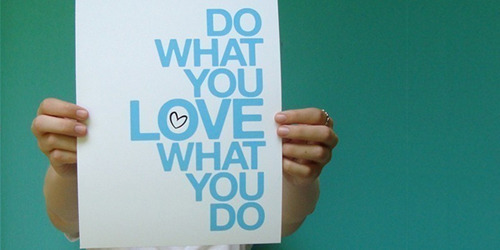
If you are passionate about your work, the concept of “work” begins to diminish. You never neglect your job, mainly because it’s never a hassle, or an annoying obligation (like those of people with poor work-life balance)
-
4. A good route to balance is to find a boring and secure job.
No way! That’s an illusion. A boring job will only bring you boredom, not balance. Yes, you can leave at 5 pm everyday and don’t need to think about work at all before the next morning, but this is an unfulfilling way to live. It is not work-life balance unless you have both. This means you’ll want to have a truly exciting job that challenges you, makes you grow, and matters to both you and others.
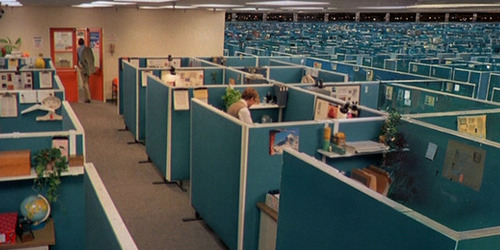
A boring job may let you clock out at 5pm, but it may begin to make you dread clocking in at 9am, a tell-tale sign that you don’t have work-life balance.
-
5. People with balance are a good option to seek help from.
Sometimes people get offended if I don’t answer their unsolicited email within a few days. Their rationale goes something like this: “as the balanced person you are, you must be able to find the time to answer me”. Well, that’s getting it backward. I can be balanced because I have learned the importance of protecting my own time and moving forward on my own priorities. Of course I do my best to be helpful, but it can’t be at the expense of my integrity. Stand up for your balance, or it will fade away.

Those who have (and maintain) healthy work-life balance, are those who know to protect it. It’s about understanding how you work best, and accepting your own flow. Don’t let your personal flow be dictated by the demands of others.
Many people have a view that there’s a set collection of checkpoints you must cross in order to have a healthy work-life balance. In my experience, a set universal standard doesn’t work for everyone. The point of work-life balance isn’t only to be happy at work and at home. It’s about finding a balance within yourself as well, allowing yourself to divulge to your own flow, while growing both professionally and personally.
Want to learn how Martin debunked these misconceptions about work-life balance? Take a peek at the 66 strategies he gathered from successful and balanced entrepreneurs from around the world, and find out how you can achieve your own perfect work-life balance.
by Martin Bjergegaard & Jordan Milne
Buy now in print and digital!
$US 9.30 / £5.50
*Currency conversion varies
Images from: here, here, here, and here
The post Top 5 Misconceptions About Work-Life Balance appeared first on Pine Tribe.
April 28, 2014
Your Worst Self
I haven´t written anything for a long time. There’s a reason for that; these days I am not feeling like my best self—I’m rather like my worst self. When your role in the world is to be an inspirational voice for others, that’s kind of a problem.
At least that’s how I have been thinking. So I have kept quiet. Today has probably been the hardest day in a string of days that I, in my own mind, have labeled “my second life crisis” (don’t ask). So it’s quite a paradox that for the first time in months I have unexpectedly (and to my own surprise) gathered up the nerve to finally ink another article.
The reason for that is a sudden realization—something that I have known for years as ancient wisdom, but that I have somehow forgotten: a crisis is a beautiful thing. When we are at our lowest, that’s exactly when we have the opportunity to grow the most. Your Best Self and Your Worst Self are interwoven. It’s a wheel, not a continuum. So without further ado, welcome to my mess and what I have learned from it so far.

Life is a continuum, in any balanced life there will always be high points and low points.
Almost 6 years ago I was with Annika for the first time, and we fell in love impulsively and intensely. I had just come out of a 10-year long relationship, which gave me the sweetest 1.5-year-old daughter I could ever have dreamed of. Within a year, the three of us moved together in a beautiful home in the middle of Copenhagen. Everything was perfect. I – and we – have enjoyed the benefits of a great work/life balance, and profound feelings of love. Fast-forward to present times, and Annika has just moved out of the house, (on my initiative) because we simply couldn’t get the “brought together” family to work. No one has done anything wrong. I can’t even blame work, because my work/life balance is still as close to ideal as it can get. Annika and I have both tried our very best, but it’s very difficult to get the family dynamic to work in a way that is enjoyable and fruitful for the three of us. It’s still an open topic as to where the whole situation will land, but we have taken a break—which has made us both quite sad since we still deeply love each other.
My first reaction to all of this have been:
Shame (“what’s wrong with me since I can’t get my family to work”)
Isolation (“this is so shameful, that I better try to hide it”)
Despair (“things will never be good again”)
Thinking and feeling like this is of course irrational and counterproductive. It helped a lot when I finally admitted to myself, and a bit later to my close friends, that I was no longer my cheerful self. I tend to praise myself for being self-reliant, and due to that, sharing my personal situations can be difficult. But boy did it do wonders! I (once again) experienced how friends and family members are in fact there for you. I slept on my best friends couch for a week and he willingly listened to my inconsistent chatter evening after evening.
My crisis is by no means over. Maybe it has only just started, who knows. However, I feel I already have learned (or been reminded) about some important lessons for “personal crisis management” that I felt like sharing:
-
1. Allow the pain to be there
For a long time I’ve told myself, “I am a strong guy. No matter what happens I can deal with it without it really getting to me.” Well, I was wrong! Despite my studies of personal growth, my meditation practice, my 4 weekly work outs, my mantras and long time efforts for positive thinking—this completely normal thing (relationship trouble) swept me of me feet. Only after acknowledging the pain have I been able to take small steps forward – letting the pain be there, feeling it with all of my body. Unfortunately, I cannot cry – if you can I will recommend you do when you are feeling really sad (check out this article about the importance of crying).
-
2. Look for the melody
A friend of mine is a very successful businessman. He is also in a constant struggle with a history and pattern of severe depression. He gave me a very useful piece of advice, as he said: “When you are feeling down, look for the melody. Just like with a piano, there are light and dark tones in life. But it’s all music, if only you look for it.” When I feel terrible, I go into the emotion. I ask myself; how does this actually feel? In my chest, in my arms, in my stomach. How is my vision, how are my thoughts, how is my interpretation of my surroundings. Sure enough, if I can stay in this mode for a while, there it is; the melody of life. Quiet, withheld, and dark – but it’s still there.

If you ever feel the impeding silence, take some time and tune into the rhythm of your life. Use the music to guide your way, and mold it to become a tune you’d enjoy.
-
3. Accept to be slow
At a more practical level, I have been able to keep doing my work during my personal crisis—only because I have accepted that I am slower than I normally am. In a stressed situation our mind has a lot of work to do—questions like, “What does this mean? Why has it happened? How can I get back on track? What’s wrong with me?” These questions take up a lot of mind power and energy. Even if some of it is happening on an almost subconscious level. So we need to go easy on ourselves. For instance, today it took me 2 hours just to get out of bed and into the shower. A part of me wants to beat myself up about that, but throughout the last weeks, I have realized that will only make things worse.
-
4. Seek out company
When you are feeling down, isolation is the killer. Don’t go there! Recently, my first inclination many mornings have been: “I can’t cope with meeting other people today, let me cancel everything.” However, we all know that’s not the way to go. Instead set out to meet people you like and who bring out the best in you. Even if it’s just for a little while where you can forget your trouble, or get help to digest everything that’s going on, it’s worth it. This goes for introverts and extroverts alike. Isolating yourself will give you all the room you need to let your thoughts spin out of control, and nothing good will come of that.
-
5. Stick to your routines
When something major goes wrong in our lives, it’s easy to get so shocked that we stray away from our usual routines. That’s a terrible idea. In a personal crisis the routines are more important than ever. That’s why I have been dragging myself to the gym four times a week, like I always do. It surely hasn’t been easy; some days I have been sitting with my running shoes on, starring at the wall for half an hour, before convincing my legs to carry me out the door. But it has been worth it. You can forget about your exercise and drink too many mojitos when you are in a good mood. When you are feeling down, do everything you can to walk the line, and do what you know is good for you.

If you ever go through a turbulent period, it’s important to stick to your routines in order to keep a level head. Whether it’s fitness, food, or friends, it’s important not to get lost in life when you hit a bump in the road.
-
6. Search for an oasis
These difficult days, I am really dependent on a nice experience or two a day. Just small things can make a big difference. Or to put it another way; I wouldn’t know how to get through the day without them. Today, for instance, I had a massage, and a great ice cream. I did my best to enjoy both of these experiences, turning them into an oasis in the middle a difficult time. What do you really like doing? What normally cheers you up? You might want to think about it, and write it down, now that you are in a good mood—because when the shit hits the fan thinking about good things might not come natural to you.
-
7. Be open and honest
I think most of us would rather try to cover up our downturns than share them openly. For a long time I thought that everyone would hate me if they knew what was going on inside of me. That’s of course nonsense. When we try to hide that we are having a tough time, others will notice that something is wrong and they will jump to their own conclusions. Maybe they will think we don’t like them anymore, that we are no longer motivated by our job, or that we are arrogant. I am definitely not advocating running around the office disturbing everyone with the full story of every little relationship hick up you might be having. But if you are consistently sad, angry or depressed for a month straight, then it’s far better to be open about it, than to try to hide it. People will notice something is wrong any way, and it’s much better that they know what is going on, than make their own wrongful assumptions. I have even let my investors in on the complete story, and guess what; they have been great and are supporting me the whole way!

Be open and honest about your personal situation if it begins to effect your professional life. In the end, people are very understanding, and it’s better that they know the truth rather than jump to their own conclusions.
It’s fair to assume that all of us will have quite a few rough periods throughout our lifetime. There’s really no way to get around that. The only thing we can do is to make sure to learn the most we can from every crisis. That way we become stronger by the hardships we encounter in life, not the opposite. On that note, I am now heading off to a great Italian restaurant I discovered a few days ago here in Manhattan. I already know that it won’t be the best evening I have ever had, because the painful feeling inside me will accompany me, but it’s surely better than giving in to my first idea, to order junk food and stay alone in my apartment.
Images from: here, here, and here
The post Your Worst Self appeared first on Pine Tribe.



